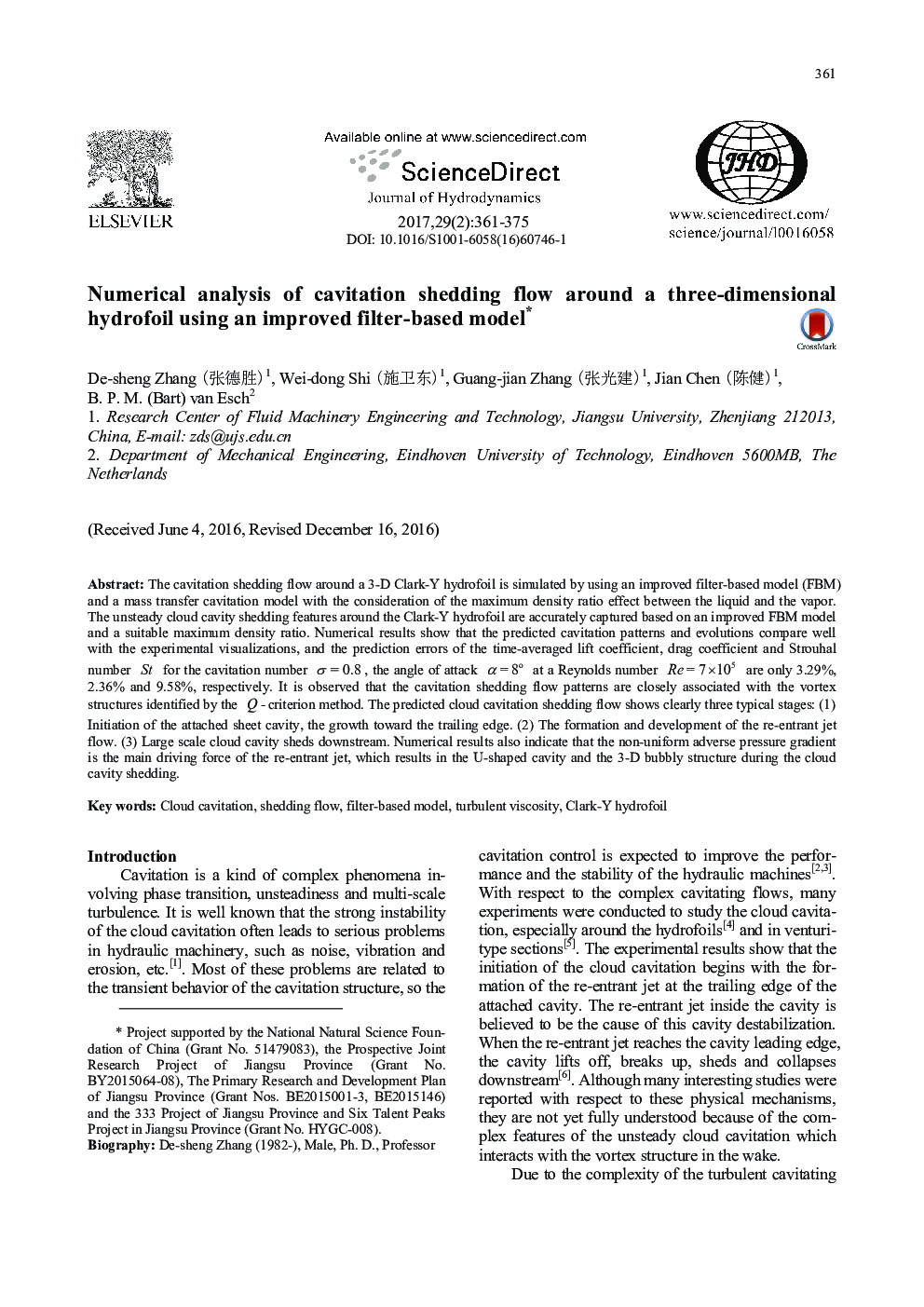| Article ID | Journal | Published Year | Pages | File Type |
|---|---|---|---|---|
| 5473681 | Journal of Hydrodynamics, Ser. B | 2017 | 15 Pages |
Abstract
The cavitation shedding flow around a 3-D Clark-Y hydrofoil is simulated by using an improved filter-based model (FBM) and a mass transfer cavitation model with the consideration of the maximum density ratio effect between the liquid and the vapor. The unsteady cloud cavity shedding features around the Clark-Y hydrofoil are accurately captured based on an improved FBM model and a suitable maximum density ratio. Numerical results show that the predicted cavitation patterns and evolutions compare well with the experimental visualizations, and the prediction errors of the time-averaged lift coefficient, drag coefficient and Strouhal number for the cavitation number, the angle of attack at a Reynolds number are only 3.29%, 2.36% and 9.58%, respectively. It is observed that the cavitation shedding flow patterns are closely associated with the vortex structures identified by the criterion method. The predicted cloud cavitation shedding flow shows clearly three typical stages: (1) Initiation of the attached sheet cavity, the growth toward the trailing edge. (2) The formation and development of the re-entrant jet flow. (3) Large scale cloud cavity sheds downstream. Numerical results also indicate that the non-uniform adverse pressure gradient is the main driving force of the re-entrant jet, which results in the U-shaped cavity and the 3-D bubbly structure during the cloud cavity shedding.
Keywords
Related Topics
Physical Sciences and Engineering
Engineering
Ocean Engineering
Authors
De-sheng (å¼ å¾·è), Wei-dong (æ½å«ä¸), Guang-jian (å¼ å
建), Jian (éå¥), B.P.M. (Bart) van Esch,
